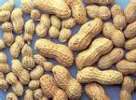
House Hearing Pries Open Peanut Corporation's Mailbox
The U.S. House Energy and Commerce Subcommittee on Oversight and Investigations held a hearing today on the salmonella outbreak involving peanuts. Stewart Parnell, president of Peanut Corporation of America, the company implicated by FDA in the outbreak and owner of two plants currently closed in Georgia and Texas, invoked his Fifth Amendment right and declined to testify today. The committee's Web site had already made public eight e-mails sent or received by PCA personnel and a letter answering subcommittee questions from the manager and coordinator of microbiology laboratories to which PCA sent samples.
Energy and Commerce Chair Rep. Henry Waxman, D-Calif., said the case is part of a larger food safety problem. "For too long, the American people have not been able to trust that the food they eat is safe. From botulism in canned food to cattle that are too sick to even stand, our nation's food supply is at risk," Waxman said in his opening statement. "As we will hear during our first panel, those who most often pay the price are the young, elderly, and infirm. We know the tainted products distributed by the Peanut Corporation of America were sent to elementary schools, nursing homes, hospitals, and even FEMA meal kits handed out in the wake of the Kentucky ice storms. Today, the public will hear the first results of our investigation."
Nine deaths and some 600 illnesses have been reported to be linked to this salmonella outbreak. The witnesses at today's hearing included Stephen Sundlof, D.V.M., Ph.D., director of FDA's Center for Food Safety and Applied Nutrition, and Oscar Garrison of the Georgia Department of Agriculture's Consumer Protection Division. Both FDA and PCA have posted updated lists of recalled products on their Web sites. Rep. Bart Stupak, D-Mich., who chairs the subcommittee, said Jan. 30 that he wanted to hear today from FDA and PCA "how, despite repeated sanitary violations over the past few years at the Blakely [Ga.] facility, they were allowed to continue production."